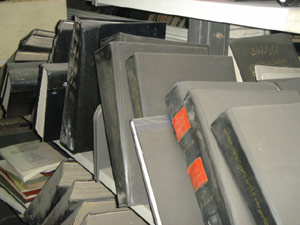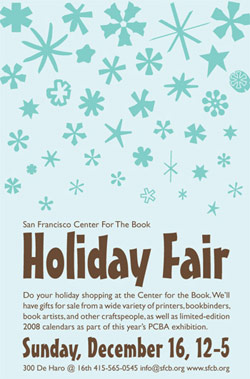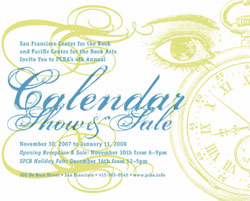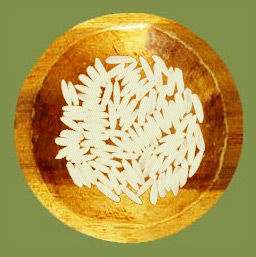This is a sketch from the Norwegian Broadcasting television channel program “Øystein og meg” (with English subtitles).
This is a sketch from the Norwegian Broadcasting television channel program “Øystein og meg” (with English subtitles).
 I’ve been using the public libraries since I could first read. It was a big event for my sisters and me when we finally got a library in the town where I grew up. Today I count on my local library for out-of-print resources as well as recent best sellers. So you could say I’m a big supporter of libraries.
I’ve been using the public libraries since I could first read. It was a big event for my sisters and me when we finally got a library in the town where I grew up. Today I count on my local library for out-of-print resources as well as recent best sellers. So you could say I’m a big supporter of libraries.
![]() I’m also the editor of the book arts quarterly Ampersand, and for the issue I’m just sending off to the printer, I wanted to include photos of some of the broadsides from an exhibition last fall at the San Francisco Center for the Book protesting the March 5th 2007 car bombing on al-Mutanabi Street in Baghdad. This street is the historic center of Baghdad bookselling, a winding street filled with bookstores and outdoor book stalls. But, as my friend Cathy pointed out to me, the March bombing wasn’t an isolated event—since Saddam Hussein’s regime was toppled in 2003 there have been many bombings and much destruction around al-Mutanabi Street, starting with the Iraq National Library and Archive in Baghdad which was set alight and looted.
I’m also the editor of the book arts quarterly Ampersand, and for the issue I’m just sending off to the printer, I wanted to include photos of some of the broadsides from an exhibition last fall at the San Francisco Center for the Book protesting the March 5th 2007 car bombing on al-Mutanabi Street in Baghdad. This street is the historic center of Baghdad bookselling, a winding street filled with bookstores and outdoor book stalls. But, as my friend Cathy pointed out to me, the March bombing wasn’t an isolated event—since Saddam Hussein’s regime was toppled in 2003 there have been many bombings and much destruction around al-Mutanabi Street, starting with the Iraq National Library and Archive in Baghdad which was set alight and looted.
![]() In 2003, Dr Saad Eskander, the Director of the Iraq National Library and Archive (INLA), began a blog, hosted by the British Library. His entries are a vivid and powerful account of the challenges facing the INLA to protect Iraq’s cultural heritage. It’s a fascinating read. Below are a few more resources Cathy gave me:
In 2003, Dr Saad Eskander, the Director of the Iraq National Library and Archive (INLA), began a blog, hosted by the British Library. His entries are a vivid and powerful account of the challenges facing the INLA to protect Iraq’s cultural heritage. It’s a fascinating read. Below are a few more resources Cathy gave me:
 |
| Abecedary (Nabokov’s Theory of a Colored Alphabet applied to Heisenberg’s Uncertainty Principle) (detail) by Spencer Finch. Uses Nabokov’s system of a colored alphabet to transliterate 9,251 characters from Heisenberg’s text. [Click on the image to see the entire painting.] |
I’m gotten several emails about my blog post on my wood type collage Synesthesia, why I chose that title, and my own confusion between numbers and colors. The most recent email recommended I look at Spencer Finch’s painting Abecedary, now at the Massachusetts Museum of Contemporary Art, with the intriguing subtitle “Nabokov’s Theory of a Colored Alphabet applied to Heisenberg’s Uncertainty Principle.”
![]() That subtitle took me off on a happy hour of Google searching for Nabokov’s theory. It turns out Nabokov (who is famous for writing, among other things, Lolita) had synesthesia and wrote about it in his autobiography Speak, Memory (that’s the theory quoted below). Then I found the book Alphabet in Color which, according to one reviewer “showcases what Nabokov heard with respect to colors would manifest visually to the rest of us with charming, vibrant, synesthetic colored letters.” As seems to be usual in cases of obscure books, it’s not available at my library or a local bookstore, but one of the pages is shown below. You can read Brian Boyd’s interesting intro to the book here. (The title of this post is taken from a line in Nabokov’s book Ada or Ardor — the end of the Nabokov quote below explains how to speak in the language of rainbows.)
That subtitle took me off on a happy hour of Google searching for Nabokov’s theory. It turns out Nabokov (who is famous for writing, among other things, Lolita) had synesthesia and wrote about it in his autobiography Speak, Memory (that’s the theory quoted below). Then I found the book Alphabet in Color which, according to one reviewer “showcases what Nabokov heard with respect to colors would manifest visually to the rest of us with charming, vibrant, synesthetic colored letters.” As seems to be usual in cases of obscure books, it’s not available at my library or a local bookstore, but one of the pages is shown below. You can read Brian Boyd’s interesting intro to the book here. (The title of this post is taken from a line in Nabokov’s book Ada or Ardor — the end of the Nabokov quote below explains how to speak in the language of rainbows.)
“I present a fine case of colored hearing. Perhaps “hearing” is not quite accurate, since the color sensation seems to be produced by the very act of my orally forming a given letter while I imagine its outline. The long a of the English alphabet (and it is this alphabet I have in mind farther on unless otherwise stated) has for me the tint of weathered wood, but a French a evokes polished ebony. This black group also includes hard g (vulcanized rubber) and r (a sooty rag being ripped). Oatmeal n, noodle-limp l, and the ivory-backed hard mirror of o take care of the whites. I am puzzled by my French on which I see as the brimming tension-surface of alcohol in a small glass. Passing on to the blue group, there is steely x, thundercloud z, and huckleberry k. Since a subtle interaction exists between sound and shape, I see q as browner than k, while s is not the light blue of c, but a curious mixture of azure and mother-of-pearl. Adjacent tints do not merge, and diphthongs do not have special colors of their own, unless represented by a single character in some other language (thus the fluffy-gray, three-stemmed Russian letter that stands for sh, a letter as old as the rushes of the Nile, influences its English representation).
I hasten to complete my list before I am interrupted. In the green group, there are alder-leaf f, the unripe apple of p, and pistachio t. Dull green, combined somehow with violet, is the best I can do for w. The yellows comprise various e‘s and i‘s, creamy d, bright-golden y, and u, whose alphabetical value I can express only by “brassy with an olive sheen”. In the brown group, there are the rich rubbery tone of the soft g, paler j, and the drab shoelace of h. Finally, among the reds, b has the tone called burnt sienna by painters, m is a fold of pink flannel, and today I have at last perfectly matched v with “Rose Quartz” in Maerz and Puol’s Dictionary of Color. The word for rainbow, a primary, but decidedly muddy, rainbow, is in my private language the hardly pronounceable: kzspygv. ”
 This coming weekend is a busy one for me — two days of selling at holiday fairs. If you’re in the SF Bay Area, hope you can stop by!
This coming weekend is a busy one for me — two days of selling at holiday fairs. If you’re in the SF Bay Area, hope you can stop by!
![]() For me, this is probably the end of my holiday selling — since most of my wares are mail order, in the next week I’ll send out the last of my holiday packages. Whew, it’s been a busy fall and I’m looking forward to a quiet end of December when I’ll put my feet up and enjoy a glass or 2 of eggnog and give my press and studio a much needed rest!
For me, this is probably the end of my holiday selling — since most of my wares are mail order, in the next week I’ll send out the last of my holiday packages. Whew, it’s been a busy fall and I’m looking forward to a quiet end of December when I’ll put my feet up and enjoy a glass or 2 of eggnog and give my press and studio a much needed rest!
![]() But, until then…
But, until then…
![]() On Saturday December 15th from 11am-6pm I’ll be at the Bazaar Bizarre in Golden Gate Park along with many other Etsy sellers. You can see a full list of vendors here.
On Saturday December 15th from 11am-6pm I’ll be at the Bazaar Bizarre in Golden Gate Park along with many other Etsy sellers. You can see a full list of vendors here.
![]() And from 12-5pm on Sunday December 16th is the holiday fair at San Francisco Center for the Book where you’ll find artists’ books and journals, letterpress goods and lots more, from a variety of vendors. SFCB is on Potrero Hill in San Francisco.
And from 12-5pm on Sunday December 16th is the holiday fair at San Francisco Center for the Book where you’ll find artists’ books and journals, letterpress goods and lots more, from a variety of vendors. SFCB is on Potrero Hill in San Francisco.
 For the fourth year, the members of the Pacific Center for the Book Arts sponsor a showing of calendars during the month of December in the San Francisco Center for the Books’ gallery. The show is a celebration of the seasons, the mysteries of time, and plans for the future. My calendar will be on display, along with about 24 other entries. For the fourth year, the members of the Pacific Center for the Book Arts sponsor a showing of calendars during the month of December in the San Francisco Center for the Books’ gallery. The show is a celebration of the seasons, the mysteries of time, and plans for the future. My calendar will be on display, along with about 24 other entries. |

I’ve always been a reader — which probably explains why I like to make books. And I also love words. So I had fun the other day playing the vocabulary test at Free Rice. It’s multiple choice (thankfully!) and for every word you define correctly, 10 grains of rice are donated to the United Nations World Food Program. 10 grains doesn’t sound like much, but as of Nov 22nd they’d “raised” over 3 billion grains. In any event, give it a try. Especially today, Thanksgiving in the US, when we celebrate our good fortune in having enough to eat.